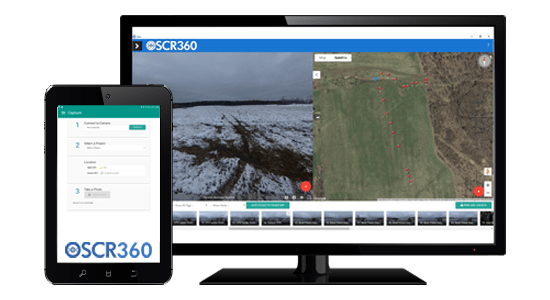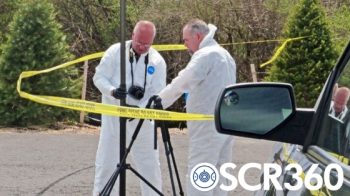Building a Strong Case for a Hunting Related Shooting Incident
How OSCR360 aided In a HRSI Investigation
Case Background
A single shot rang out on a frigid, snowy evening.
What was meant to be a relaxing walk after work, quickly became her final moments of breath.
While not always fatal, a hunting related shooting incident is real and, in this instance, tragic. A woman walking her dogs was struck by a game hunter who mistook her for a white-tailed deer.
The hunter would ultimately be charged with criminally negligent homicide, but as with any hunting related shooting incident, there are always a lot of questions surrounding the chain of events, the environmental surroundings, and the intent of the shooter. Further questions included whether investigators had documented the evidence well enough and how the case would be portrayed to the grand jury.
Would justice prevail?
The HRSI Investigation - First on the Scene
The job of law enforcement was clear: determine the perspective of the shooter, determine the perspective of the victim, collect and piece together the evidence, and provide an accurate portrayal of the events that had transpired.
Ultimately, the grand jury needed to determine if the actions that the hunter had taken were negligent and illegal.
Upon arrival to the scene early in the morning, investigator John Dobies and OSCR360 were prepared to process the scene. Due to the cold, western NY weather, many of the bootprints from the day prior were perfectly preserved in the mud. Initial observations showed the UTV parked where the shooter had left it, near the area of the victim’s body, which was marked off with fluorescent rods. There was snow on the ground, boot tracks frozen in the mud, and a single tire track path leading from the shooter’s location to the victim.
Using OSCR360, the investigator documented the route of the shooter to the victim by placing OSCR at set intervals from the body to the shooter’s location. Dobies also used OSCR to corroborate the shooter’s statement of where he had entered and left the woods to hunt. While processing the scene, DSLR photos were also taken of the victim’s white gloves and the shooter’s boot prints. He happened to be wearing distinct shoes, so these footprints were easy to separate from other tracks found at the scene. These DSLR images would later be embedded within the OSCR software to further give context to where evidence was recovered in relation to the larger scene – a big open field.
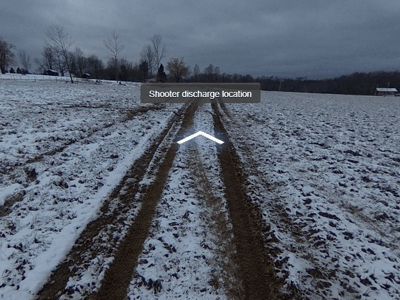
The Grand Jury Proceedings
Months later, once grand jury was selected, Investigator John Dobies was asked to appear before jurors to go through the evidence and the scene. The investigator was instructed to mirror the statements that the alleged shooter had given to police the night before.
“The shooter said he had been hunting earlier in the day and had just left the wooded area and entered a field to head home, approximately a half hour after sunset. As he neared his UTV, he observed movement in the field, almost 300 yards away. Thinking it was a white-tailed deer, he quickly turned, steadied himself against the UTV, aimed, and shot. The victim screamed and he quickly drove his UTV in her direction. He called 911 and applied pressure to her wound until paramedics arrived.”
Once grand jury was underway, the Investigator Dobies found himself on the stand multiple times. First, he presented the evidence he had found. Subsequently, he was called back to the stand to answer very specific questions for the grand jury, as jury members tried to fully understand the scene and the details involved.
It can be extremely difficult to describe to a jury the intricacies of a hunting related shooting. The jury members often have different experiences with guns and hunting. They may not understand what the hunter could see with his naked eye and how long it would take him to pull out his gun. Investigator Dobies needed to explain details around gun operation, in addition to the NYS laws. He also had the added challenge of demonstrating what a shot might look like from a certain distance.
Given that the scene is was large open field, the OSCR360 software presentation and 360 degree images helped the jury to understand what the environment looked like. Because OSCR takes 360 degree images that are similar to what the naked eye would see, the OSCR images showed jurors how far away the victim was from the hunter. During a hunting related shooting incident (HRSI) investigation, images of the victim’s clothes are taken to demonstrate how they looked at the time of weapon discharge. Paired with the OSCR images, this can demonstrate how the victim may have blended into the background.
At Grand Jury, several questions are typically asked, such as:
- How far away was the shooter?
- Where exactly was the shooter standing?
- Was there a chance that the bullet ricocheted?
- Did the bullet shoot through a deer and hit the victim on the other side?
- Were there any obstructions between the shooter and the victim?
- How do we know those are his bootprints?
Why OSCR360 Matters
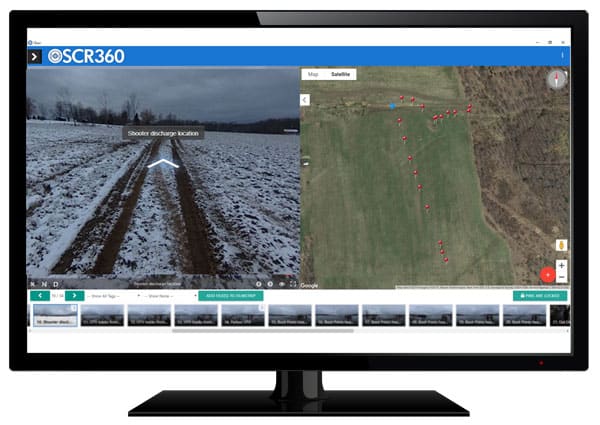
The OSCR360 presentation included a compilation of spherical 360-degree photographs so that the jurors could have a true view of the crime scene, nothing was left to the imagination. Investigator Dobies spoke to processing the scene, with the OSCR360 software pulled up on a screen behind him. Jurors were able to see precisely what the crime scene looked like when it was processed by crime scene technicians, including details like where the shooter had entered and exited the woods to hunt, where he had swiveled on his axis to grab his hand gun, and the lighting at the time of day that he fired his weapon. Investigator Dobies used OSCR360’s GPS coordinates to measure the distance between the shooter and the victim, and later Dobies took hand measurements to determine the accuracy of the system. In the OSCR software, jurors were able to see the distance of the shot on the map side by side with a 360 degree image of the scene. While the shot was over 850 feet, the accuracy between OSCR360 and hand measurements was less than 6 inches.
According to the Dobies, he knew that OSCR360 would be an ideal tool to capture this particular crime scene because the spherical images would portray just what he saw from where he was standing, and he would be able to spin the image around 360 degrees to show what the hunter saw in the sky, on the ground, and all around him.

“Jurors can see exactly what the crime scene looked like in one 360 degree photo on a big screen,” says the investigator. “OSCR captures a scene in a matter of seconds. The size of the camera, the simplicity of the software, and the overwhelming amount of information it gives you to help you explain what the scene looked like can be used in trial instead of using a bunch of 2-dimensional pictures and lining them up like a train on a desk. It was absolutely powerful.”
John Dobies, Investigator
The Conviction
In the end, the shooter was convicted of criminally negligent homicide.
The grand jury determined that his shot was illegal and negligent, since it was made after sunset without a clear view of what he had shot at.
Hunting related shooting incidents are filled with high emotion and a lot of stress,” says Investigator Dobies. “With OSCR, I was able to recreate the scene, find the minutia, and line up the facts to make sense, both for me and the jury. Although many lives will never be the same again, we can confidently say that justice was served.”
John Dobies, Investigator
Epilogue
OSCR360 continues to partner with Public Safety agencies across the country. The system is being used in 18+ states for everything from burglaries to arson investigations to major homicides. DEC and environmental agencies are using OSCR360 to provide context to hunting related shooting incidents, hazardous waste dumps, boating/dock crashes and more. See where OSCR is traveling here.
"The software is even more sharpened, with more simplicity and a greater wealth of information generated. It’s simple and fool-proof. My goal, which I believe is the goal for any law enforcement agency, is to provide all the information that makes sense and is a true and accurate representation. Laying a strong foundation for any case.”
John Dobies, Investigator
About John Dobies
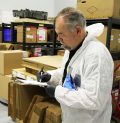
John is a retired NYS Department of Environmental Conservation Investigator with over 28 years of experience. He spent 5 years as a DEC Bureau Investigator and 15 years as a certified crime scene technician. In 2018, John Dobies joined the L-Tron Law Enforcement Support team, assisting departments in learning and adopting the OSCR360 system. Click to learn more about John.
Interested in more use cases?
Click to read ‘Making Evidence Matter: Tying Together 700 Pieces of Evidence in the Rideout Trial
Interested in seeing OSCR360?
Contact us to schedule an in person or web demonstration.
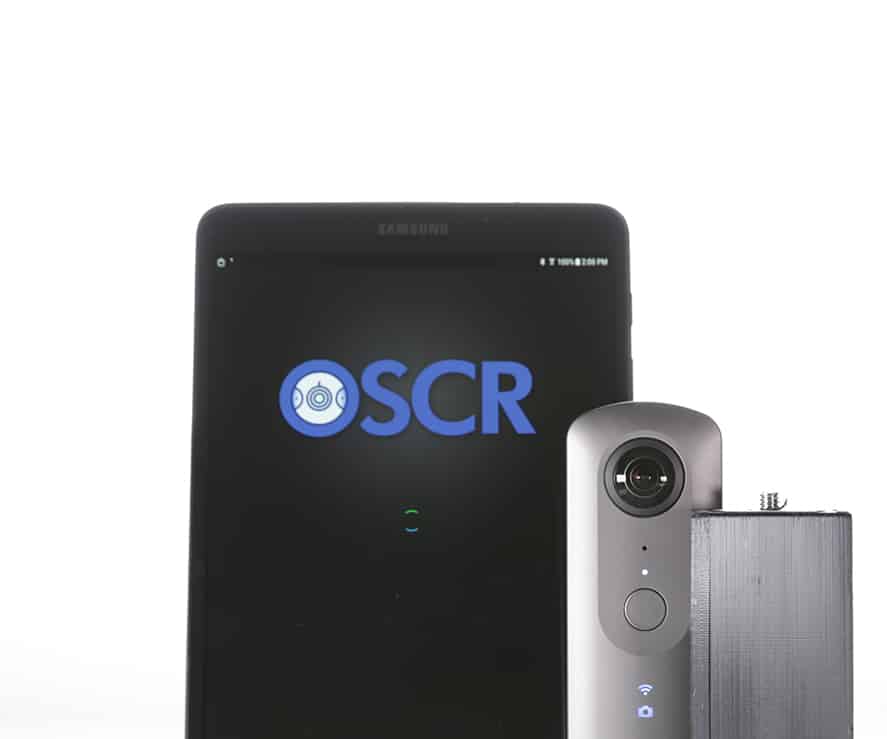
About OSCR360
OSCR360 is a two part system made up of a 360 degree capture kit and software. OSCR partners with you on crime scene investigations, crash investigations, fire service, emergency management planning, forensic science curriculum, active shooter preplanning and more.
Contact Us
Interested in learning more about OSCR360 for your agency?
Fill out the contact form and Julianne will get back to you within one hour on the same business day.
